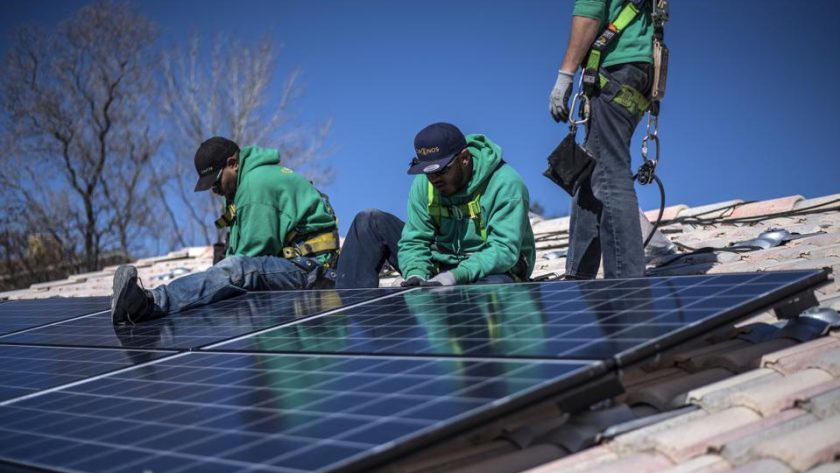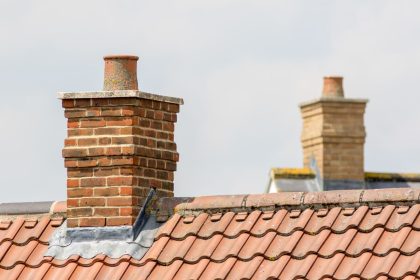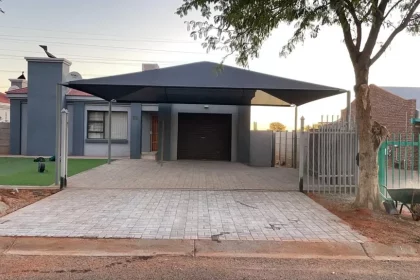The solar rooftop power system is a PV system with solar panels for electricity generation mounted on either residential or commercial rooftop structures or buildings. Different components of these systems involve mounting systems, photovoltaic modules, solar inverters, cables, or other electrical accessories.
Sunlight hitting the roof is captured by solar panels and converted into electricity. In addition, the solar inverter linked to solar panels helps convert electricity to clean energy for powering home lights and appliances. Home powering using solar energy helps reduce the energy required to pull from the grid, thus reducing the electricity bill.
Mounted rooftop systems are small compared to solar ground utility scale mounted PV power stations with capacities within the megawatt range, therefore, distributed generation form. The grid connects rooftop photovoltaic stations.
PV systems that roofing companies in Albuquerque use typically feature residential buildings with the capability of 5 to 20 KW, whereas those mounted upon commercial buildings reach from 100 KW-1MW. Large roods house PV systems of industrial scale within the 1-10 MW range.
How do solar roofs work?
Step 1: Capturing Sun Energy
Few are back-reflected or pass via the cell when photons hit the solar cells, whereas others get absorbed. Both semiconductor wafer layers are “doped” with special elements to provide them with a negative or positive charge.
The charge difference among layers generates an electric field and pushes electrons through ribbon wire to form a circuit using a photovoltaic cell. In solar roof PV tiles, solar cells absorb sunlight falling on them to generate electric current flow. Such DC (direct current) is then transferred to the solar inverter to convert AC (Alternating Current) for home power.
Step 2: Solar System Array
Different components are used for making solar roofs, such as non-PV and PV tiles, and metal flashings are used to enhance solar inverters and your roof. Such components help capture sunlight to produce direct current electricity and convert it to alternating current electricity used for appliance power.
Step 3: Generation of Excessive Power
If a solar system generates excess power not used by the home, then this power is sent for the utility of storage within Powerwall. Powerwall stored energy is then used for charging up the electric vehicle or running your home with night solar power or allowing it to store for enhancing the available home energy during an outage.
In a few cases, you will get credit from your utility in case of sent energy to grid power that can be applied for utilization in utility bills for the future. Such a billing mechanism is termed NEM (Net Energy Metering). For this billing action, there should be utility contact for NEM to ensure its availability within specific regions.
Step 4: Solar energy storage in a battery
Most solar roof systems are well-matched with storage battery systems. Battery storage addition enables the consumer for electricity reservations that any building or home generates and doesn’t consume.
Such stored energy is then available anytime at night, when energy consumption is more highly required than normal, or when there is a power outage. Any generated electricity excessive in the capacity of battery storage can be sent back to the grid according to metering guidelines for the local net, especially for credit.
Step 5: Green electricity supply to the house
Solar roof systems, for instance, SunStyle, utilize a similar PV simple process to distribute solar power to commercial buildings, homes, or other properties. The technology has been miniaturized for optimized productivity, installing engineered solar shingles at a small scale rather than panels used traditionally.
Leading edge technology
Solar roofs are composed of rear contact and passivated emitter silicon cells as the latest technology within the market. For instance, SunStyle tiles bend the sunlight for extreme retention, and shingle production efficiency is 5% greater than panels comprised of conventional monocrystalline silicon.
Twenty-four solar cells are sandwiched for unparalleled durability amongst two glass (3.2mm) sheets. Tempered high transmission solar glass protects against micro-fractures reducing efficiency from impacts such as torsional stress or hail storm against powerful windy attacks.
Conclusion:
The solar roof shows a modern upgrade in efficiency, durability, and aesthetics in contrast to conventional solar panels for several decades in the market. Solar roof utilizes sunlight to generate clean power via atomic interaction.
Solar panels and solar shingles are composed of photovoltaic (PV) cells. These cells generally comprise semi-conducting double-layer material, most frequently monocrystalline silicon, with metal or glass tapping. The module is formed by the interconnection of PV cells or solar panels having multiple panels to form a solar array to increase production in energy.





